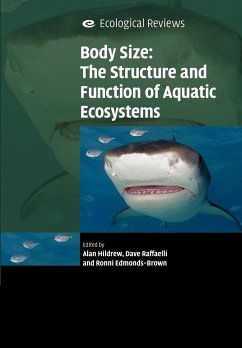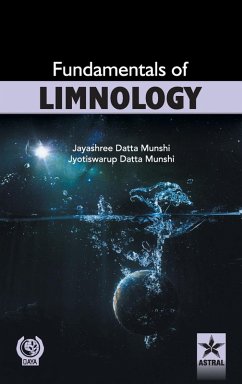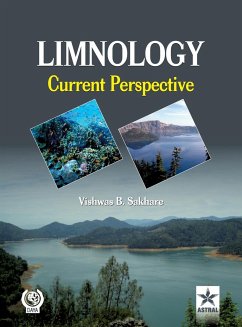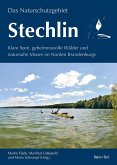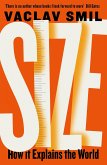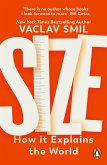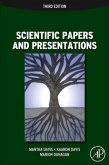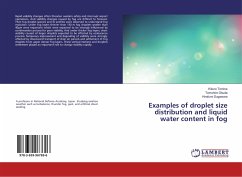An authoritative work written by leading experts unravelling the fundamental role of body size.
Ecologists have long struggled to predict features of ecological systems, such as the numbers and diversity of organisms. The wide range of body sizes in ecological communities, from tiny microbes to large animals and plants, is emerging as the key to prediction. Based on the relationship between body size and features such as biological rates, the physics of water and the amount of habitat available, we may be able to understand patterns of abundance and diversity, biogeography, interactions in food webs and the impact of fishing, adding up to a potential 'periodic table' for ecology. Remarkable progress on the unravelling, describing and modelling of aquatic food webs, revealing the fundamental role of body size, makes a book emphasising marine and freshwater ecosystems particularly apt. Here, the importance of body size is examined at a range of scales that will be of interest to professional ecologists, from students to senior researchers.
Table of contents:
1. The metabolic theory of ecology and the role of body size in marine and freshwater ecosystems
James H. Brown, Andrew P. Allen and James F. Gillooly; 2. Body size and suspension feeding Stuart Humphries; 3. Life histories and body size David Atkinson and Andrew G. Hirst; 4. Relationship between biomass turnover and body size for stream communities Alexander D. Huryn and Arthur C. Benke; 5. Body size in streams: macroinvertebrate community size composition along natural and human-induced environmental gradients Colin R. Townsend and Ross M. Thompson; 6. Body size and predatory interactions in fresh waters: scaling from individuals to communities Guy Woodward and Philip Warren; 7. Body size and trophic cascades in lakes J. Iwan Jones and Erik Jeppesen; 8. Body-size and scale-invariance: multifractals in invertebrate communities Peter E. Schmid and Jenny M. Schmid-Araya; 9. Body size and biogeography B. J. Finlay and G. F. Esteban; 10. By wind, wings or water: body size, dispersal and range size in aquatic invertebrates Simon D. Rundle, David T. Bilton and Andrew Foggo; 11. Body size and diversity in marine systems Richard M. Warwick; 12. Interplay between individual growth and population feed backs shapes body size distributions Lennart Persson and André M. De Roos; 13. The consequences of body-size in model microbial ecosystems Owen L. Petchey, Zachary T. Long and Peter J. Morin; 14. Body size, exploitation and conservation of marine organisms Simon Jennings and John D. Reynolds; 15. How body size mediates the role of animals in nutrient cycling in aquatic ecosystems Robert O. Hall, Jr., Benjamin J. Koch, Michael C. Marshall, Brad W. Taylor and Lusha M. Tronstad; 16. Body sizes in food chains of animal predators and parasites Joel E. Cohen; 17. Body size in aquatic ecology: important, but not the whole story Alan G. Hildrew, David G. Raffaelli and Ronni Edmonds-Brown.
Hinweis: Dieser Artikel kann nur an eine deutsche Lieferadresse ausgeliefert werden.
Ecologists have long struggled to predict features of ecological systems, such as the numbers and diversity of organisms. The wide range of body sizes in ecological communities, from tiny microbes to large animals and plants, is emerging as the key to prediction. Based on the relationship between body size and features such as biological rates, the physics of water and the amount of habitat available, we may be able to understand patterns of abundance and diversity, biogeography, interactions in food webs and the impact of fishing, adding up to a potential 'periodic table' for ecology. Remarkable progress on the unravelling, describing and modelling of aquatic food webs, revealing the fundamental role of body size, makes a book emphasising marine and freshwater ecosystems particularly apt. Here, the importance of body size is examined at a range of scales that will be of interest to professional ecologists, from students to senior researchers.
Table of contents:
1. The metabolic theory of ecology and the role of body size in marine and freshwater ecosystems
James H. Brown, Andrew P. Allen and James F. Gillooly; 2. Body size and suspension feeding Stuart Humphries; 3. Life histories and body size David Atkinson and Andrew G. Hirst; 4. Relationship between biomass turnover and body size for stream communities Alexander D. Huryn and Arthur C. Benke; 5. Body size in streams: macroinvertebrate community size composition along natural and human-induced environmental gradients Colin R. Townsend and Ross M. Thompson; 6. Body size and predatory interactions in fresh waters: scaling from individuals to communities Guy Woodward and Philip Warren; 7. Body size and trophic cascades in lakes J. Iwan Jones and Erik Jeppesen; 8. Body-size and scale-invariance: multifractals in invertebrate communities Peter E. Schmid and Jenny M. Schmid-Araya; 9. Body size and biogeography B. J. Finlay and G. F. Esteban; 10. By wind, wings or water: body size, dispersal and range size in aquatic invertebrates Simon D. Rundle, David T. Bilton and Andrew Foggo; 11. Body size and diversity in marine systems Richard M. Warwick; 12. Interplay between individual growth and population feed backs shapes body size distributions Lennart Persson and André M. De Roos; 13. The consequences of body-size in model microbial ecosystems Owen L. Petchey, Zachary T. Long and Peter J. Morin; 14. Body size, exploitation and conservation of marine organisms Simon Jennings and John D. Reynolds; 15. How body size mediates the role of animals in nutrient cycling in aquatic ecosystems Robert O. Hall, Jr., Benjamin J. Koch, Michael C. Marshall, Brad W. Taylor and Lusha M. Tronstad; 16. Body sizes in food chains of animal predators and parasites Joel E. Cohen; 17. Body size in aquatic ecology: important, but not the whole story Alan G. Hildrew, David G. Raffaelli and Ronni Edmonds-Brown.
Hinweis: Dieser Artikel kann nur an eine deutsche Lieferadresse ausgeliefert werden.

